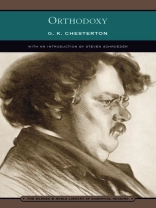Chesterton’s Orthodoxy is not an explanation “of whether the Christian Faith can be believed, but of how he personally has come to believe it.” He begins with a description of how he sets out to find a new anchor for his thought in an age of uncertainty and discovers at every step along the way that what he thought was new is exactly what the Church confesses in the Apostles’ Creed. While the motto of the modern world is “believe in yourself, ” the movement of the Creed directs one’s belief outside oneself to a maker, a redeemer, and a sanctifier of heaven and earth—and to a community of believers. Chesterton notes that those “who really believe in themselves are all in lunatic asylums, ” and this leads him to a remarkable exploration of madness, which he says is the absence, not of reason, but of imagination. Seeking freedom, he finds the Church—but he defines the Church, via the cross, as throwing its arms open rather than drawing a circle around itself.
Giới thiệu về tác giả
G. K. Chesterton (1874–1936) was a larger-than-life writer who fascinates and perplexes us to this day. An art student who became a poet, and then by turns a journalist, playwright, biographer, novelist, philosopher, and Christian apologist, his fame rested on an uncanny ability to produce vast quantities of crystalline prose quickly and without apparent effort. His fiction—particularly the Father Brown stories and the delirious suspense novel
The Man Who Was Thursday—remains his most widely read and entertaining works.







![Bìa của Brian Schrag & Julisa Rowe: Community Arts for God's Purposes [Chinese] 貼近神心意的社群藝術 Bìa của Brian Schrag & Julisa Rowe: Community Arts for God's Purposes [Chinese] 貼近神心意的社群藝術](https://static.worldofdigitals.com/thumb_webp/740/9781645083740.webp)




